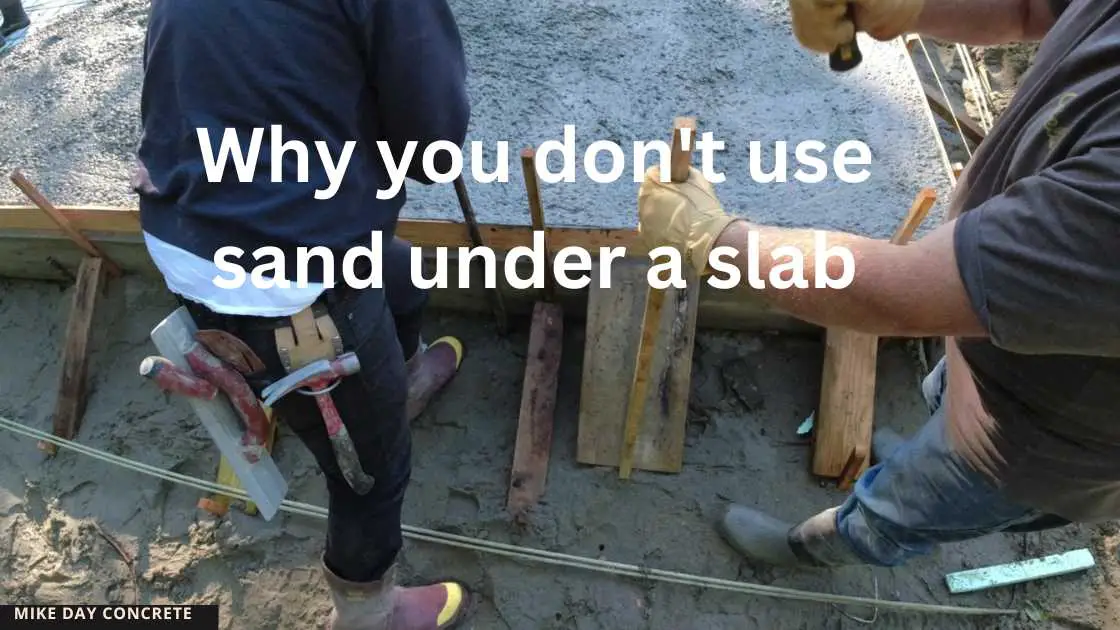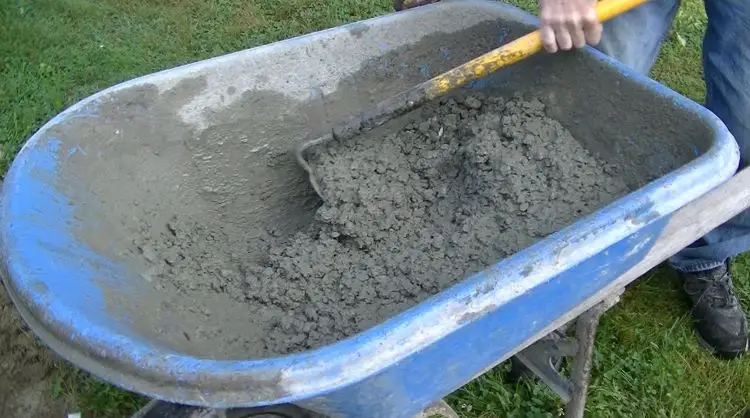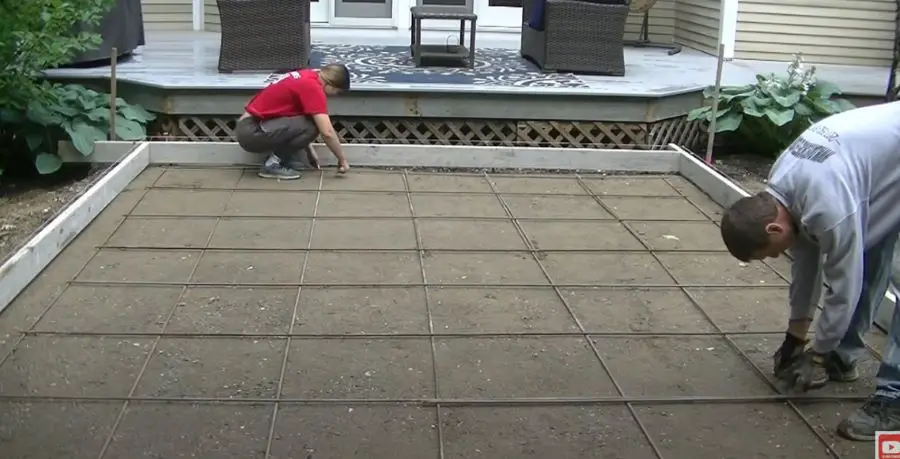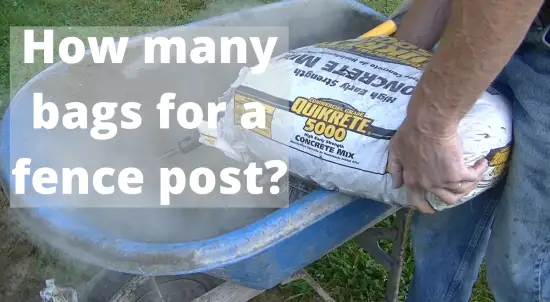Gravel Under Concrete for Patios, Slabs, and Driveways
Updated November 14, 2023
Author: Michael Day
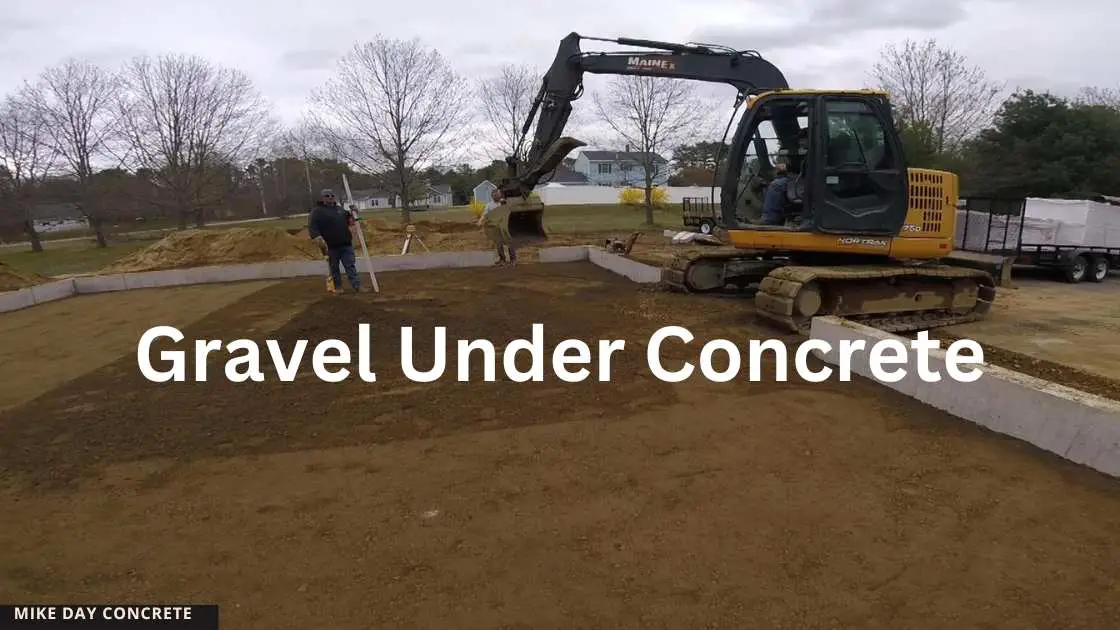
Are you wondering if you need a gravel base for concrete slabs, patios, or driveways, and if so, how much and what kind is best?
As a contractor with extensive experience in excavation, gravel, and concrete work, I'm here to guide you through the importance of using a gravel base for your concrete projects.
In this blog post, we'll explore the reasons why gravel is crucial for a strong, stable foundation, discuss the ideal thickness and type of gravel to use, and provide helpful tips on preparing the gravel base to ensure a successful and long-lasting result.
By the end of this article, you'll have the knowledge and confidence needed to tackle your concrete project like a pro. So let's dive in and uncover the secrets of gravel under concrete!
Why do you need gravel under concrete?
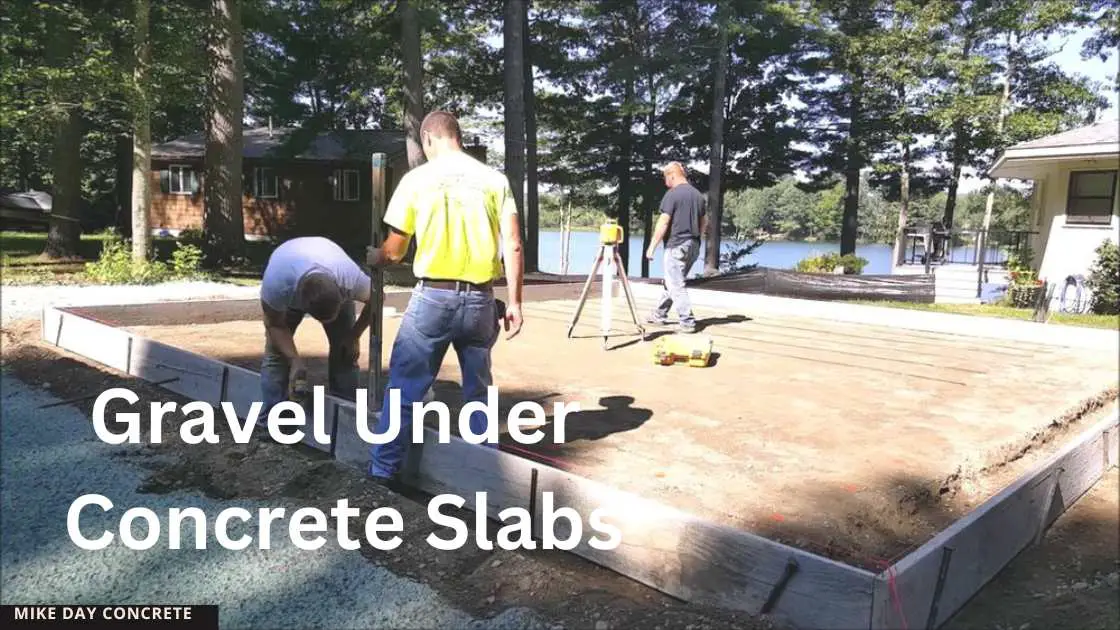
Using gravel for a base under concrete is important for several reasons, which contribute to the overall durability, stability, and longevity of the concrete structure.
Here are some key reasons why gravel is essential:
- Improved drainage: Gravel serves as a permeable layer that allows water to drain away from the concrete. This helps prevent water from pooling under the slab, which can lead to freeze-thaw cycles and, eventually, cracks in the concrete.
- Load distribution: A gravel base evenly distributes the weight of the concrete and any load placed on it, reducing the risk of sinking or settling. This is particularly important for driveways and patios, where heavy vehicles and equipment may be used.
- Compaction and stability: Gravel provides a stable and compacted base for the concrete, reducing the likelihood of shifting or movement over time. A well-prepared gravel base ensures that the concrete stays level and maintains its structural integrity.
- Frost protection: In colder climates, frost heave can cause significant damage to concrete structures. The gravel layer acts as insulation, reducing the likelihood of frost heave by minimizing the direct contact between the soil and the concrete.
- Easier leveling and grading: Gravel is easier to level and grade than soil, which means a smoother, more even surface can be achieved before the concrete is poured. This results in a better-quality slab and reduces the risk of cracking.
- Adaptability to soil conditions: Different soil types have varying degrees of stability and load-bearing capacity. Using gravel under a concrete slab allows you to create a consistent base, regardless of the soil type, ensuring a strong, compacted sub-base.
What Types of Gravel can be used under concrete
There are several types of gravel that can be used as a sub-base under concrete. The best choice for your project depends on factors such as local availability, cost, and the specific requirements of your project.
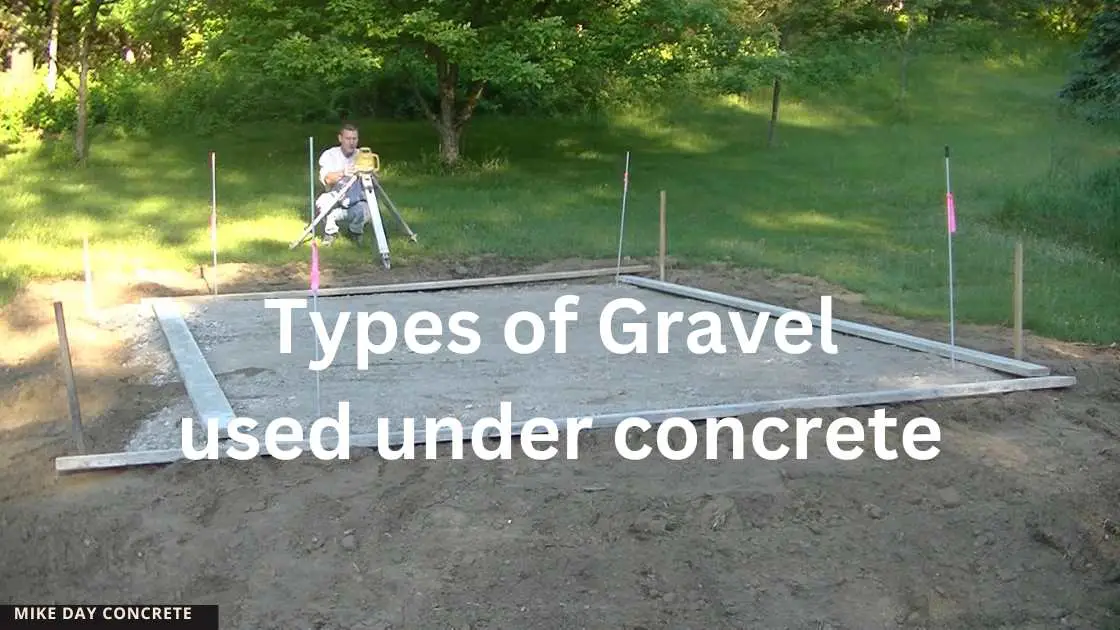
Here are some common types of gravel used for concrete sub-bases:
- Crushed stone: Also called crushed rock is a popular choice for concrete sub-bases because it provides excellent drainage, compacts well, and provides a strong, solid foundation. Sizes commonly used for this purpose range from 3/4 to 1 1/2 inches in diameter, with the larger size providing better stability.
- 3/4" crushed gravel: This type of gravel consists of angular, crushed stones approximately 3/4 inches in diameter. The sharp edges and varying sizes of the stones allow them to interlock and compact well, providing a stable and strong foundation for concrete. The spaces between the stones also enable adequate drainage, which is crucial for the long-term durability of the concrete slab.
- Dense-graded aggregate (DGA): Also known as "crusher run" or "road stone," DGA is a mix of crushed stone and stone dust. The stone dust fills the voids between the crushed stone, providing a more stable and compact base. This material is excellent for driveways, as it can withstand heavy loads and provides a smooth, even surface for the concrete.
- Pea gravel: Pea gravel consists of small, rounded stones about the size of a pea (around 3/8 inch in diameter). While not as common as crushed rock or DGA for concrete sub-bases, pea gravel can be used in some situations where a more porous material is desired, or for aesthetic reasons. However, due to its round shape, it may not compact as well and could be less stable than other options.
- Recycled concrete aggregate (RCA): RCA is made from crushed, reclaimed concrete, making it an eco-friendly option. It provides similar benefits to crushed stone, with good drainage and load-bearing capabilities. However, the quality of RCA can vary depending on the source material, so it's essential to use a reputable supplier.
- 1" minus screened gravel: This term refers to crushed gravel that includes a range of stone sizes up to 1 inch in diameter and some stone dust or fines. The variation in size allows the smaller particles to fill the voids between the larger stones, resulting in a tightly compacted and stable base. The fines also help with moisture retention and compaction. Similar to 3/4" crushed gravel, 1" minus gravel provides proper drainage and a strong foundation for your concrete slab.
how much gravel is needed under concrete?
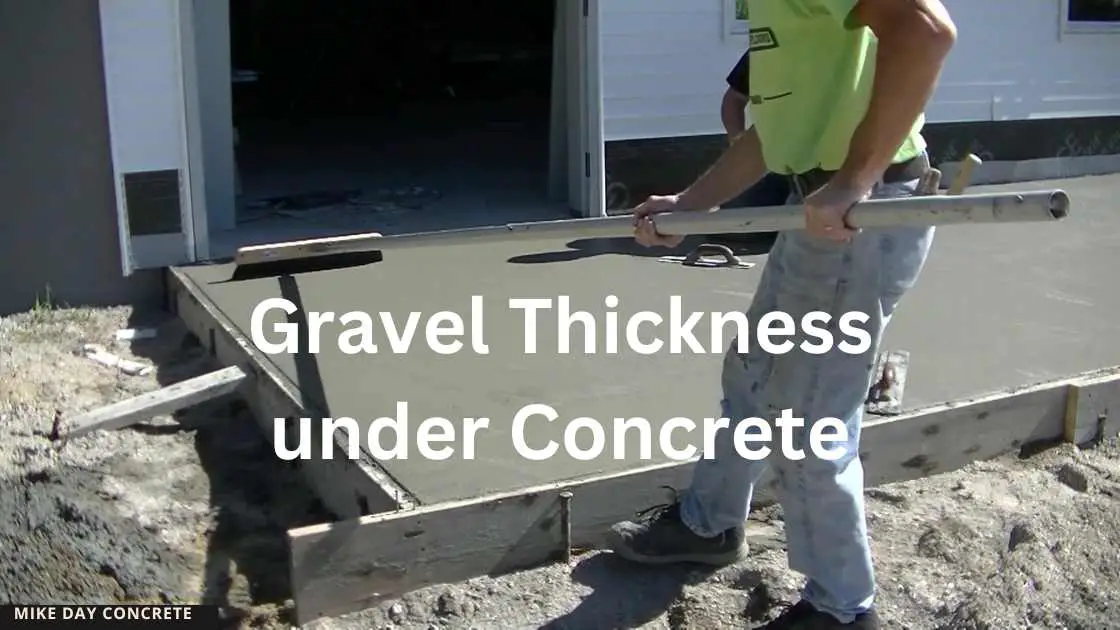
The amount of gravel needed under a concrete slab can vary based on factors such as soil type, climate, and the intended use of the concrete structure. Here are some general guidelines for how much gravel is needed for different types of projects:
- Patios: For concrete patios, a gravel base of 4 to 6 inches is typically recommended. This thickness provides a stable foundation, and adequate drainage, and helps to prevent issues such as settling and cracking.
- Slabs: For general-purpose concrete slabs, such as those used for sheds, garages, or workshops, a gravel base of 4 to 8 inches is also common. However, if the slab will be supporting heavy loads or large equipment, a thicker gravel base (up to 12 inches or more) may be needed to ensure proper stability and load distribution.
- Driveways: Driveways typically require a thicker gravel base due to the weight of vehicles and the potential for heavier traffic. A gravel base of 8 to 18 inches is recommended for residential driveways. For commercial driveways or those that will support heavy equipment or trucks, an even thicker base may be necessary.
In areas prone to freeze/thaw cycles, a thicker gravel base is often required to protect against frost heave. Frost heave occurs when water in the soil beneath the concrete freezes and expands, causing the ground to shift and potentially leading to cracks or other damage to the concrete. A thicker gravel base helps mitigate this risk in several ways:
- Improved drainage: A thicker gravel layer allows more water to drain away from the concrete, reducing the amount of water available to freeze and cause frost heave.
- Insulation: The gravel layer acts as a buffer between the soil and the concrete, reducing the heat transfer between them. This helps to keep the soil beneath the gravel layer from freezing, minimizing the risk of frost heave.
- Stability: A thicker gravel base provides a more stable and robust foundation, which is better able to resist the forces generated by frost heave.
Depending on your local climate, existing soil conditions, and the severity of the freeze/thaw cycles, a gravel base of 8 to 24 inches or more may be needed to provide adequate protection against frost heave. Consulting with a local contractor or engineer can help you determine the appropriate thickness for your specific project and location.
how to install a gravel base for concrete patios, slabs, and driveways
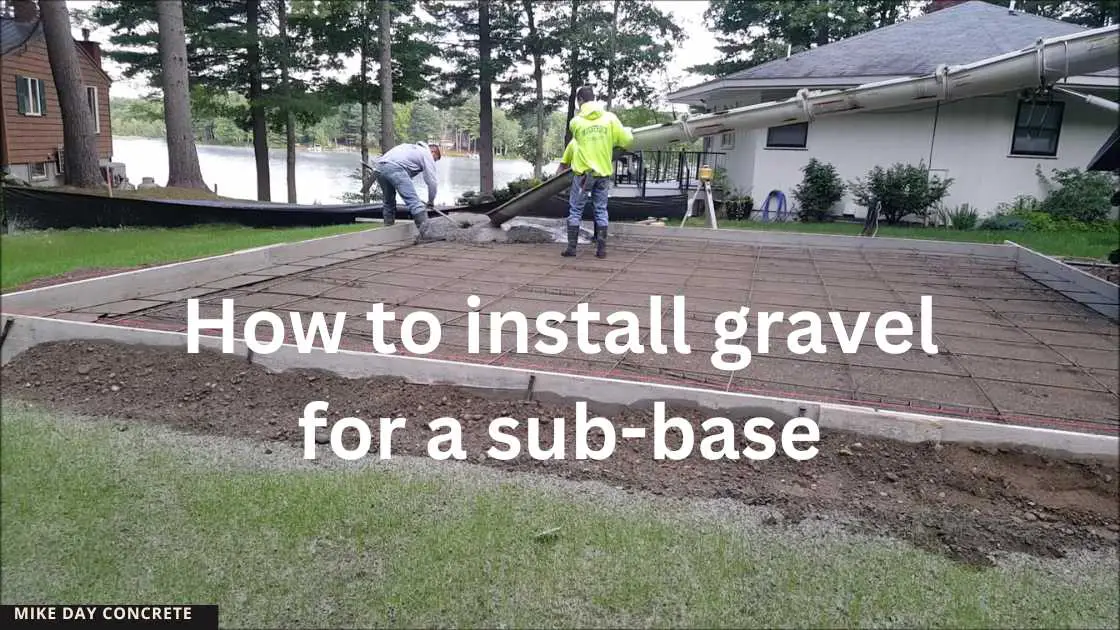
To properly install a gravel sub-base under a concrete slab, follow these general steps:
- Excavation: Begin by excavating the area where you will pour the concrete slab. Remove any vegetation, topsoil, and organic material to expose the underlying soil. The depth of the excavation should be sufficient to accommodate the desired thickness of both the gravel sub-base and the concrete slab.
- Soil preparation: Compact the exposed soil to create a stable foundation for the gravel sub-base. If the soil is particularly soft or has poor load-bearing capacity, you may need to excavate deeper and add a layer of larger, more stable aggregate material before adding the gravel.
- Geotextile fabric (optional): Depending on your soil type and project requirements, you might consider laying a geotextile fabric over the compacted soil. This fabric helps to separate the soil from the gravel, preventing the migration of fine soil particles into the gravel layer and maintaining proper drainage and soil stabilization.
- Gravel placement: Add the chosen gravel material to the excavated area in layers, typically 3-4 inches thick per layer. Ensure even distribution of the gravel to create a level surface.
- Compaction: Compact each layer of gravel using a plate compactor or similar equipment. This step is crucial to achieving a stable and well-compacted sub-base that can support the weight of the concrete and any additional loads. Make sure to moisten the gravel slightly if it's too dry, as this will help compact gravel better.
- Grading and leveling: After compacting the gravel, grade, and level the surface to ensure a consistent and smooth base for the concrete slab. This step is critical for achieving a level and even finished surface. Use a rake, shovel, or other tools to spread the gravel evenly, and then use a straight edge, such as a screed or a long 2x4, to level the surface.
- Verify thickness: Measure the thickness of the compacted gravel sub-base to ensure it meets your project requirements. Add or remove gravel as necessary to achieve the desired thickness.
- Quality control: Before pouring the concrete, double-check the entire sub-base to ensure there are no low spots, high spots, or inconsistencies that could affect the final concrete slab. Make any necessary adjustments to the sub-base before proceeding.
By following these steps, you can properly install a gravel sub-base under your concrete slab, ensuring a stable, durable, and long-lasting foundation for your project. Remember, the quality of your sub-base is crucial for the overall performance and longevity of your concrete slab, so take the time to prepare it correctly.
What happens if you don't put gravel under concrete?
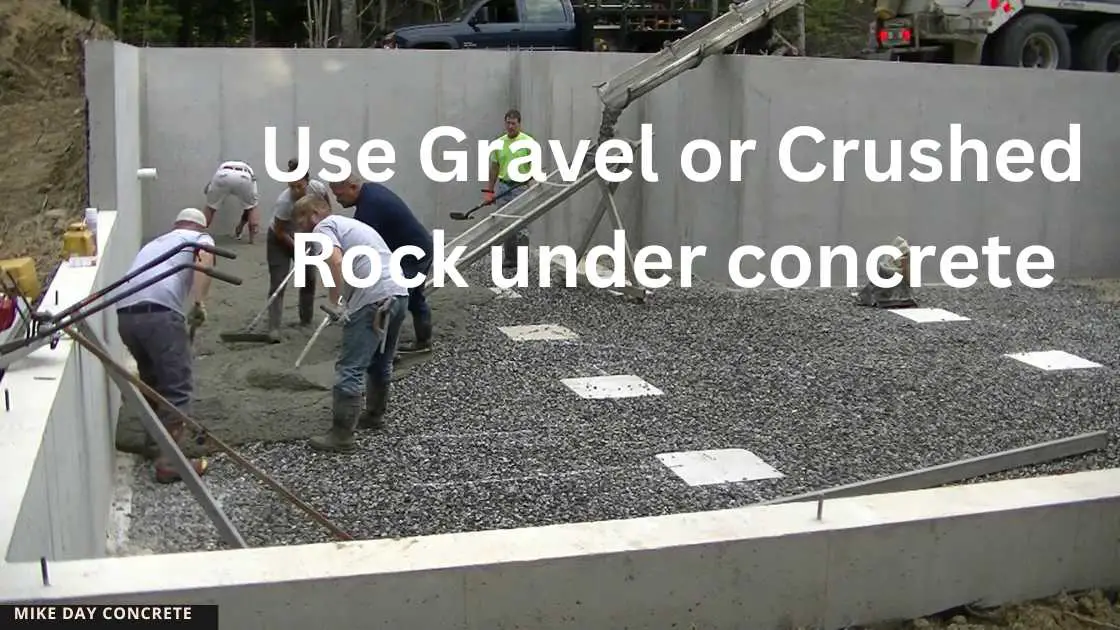
If you don't put a gravel base under concrete, you may encounter several issues that can affect the long-term stability, durability, and performance of your concrete structure.
Some potential problems you can have when pouring concrete directly on existing soil include:
- Poor drainage: Without a gravel layer to facilitate drainage, water can accumulate beneath the concrete, leading to problems such as soil erosion, pooling water, and increased hydrostatic pressure. This can weaken the concrete over time and increase the likelihood of cracking or damage.
- Increased risk of frost heave: In areas prone to freeze-thaw cycles, the absence of gravel under concrete increases the risk of frost heave. As water in the soil freezes and expands, it can cause the ground to shift, which may lead to cracks or other damage to the concrete.
- Bad soil compaction: Gravel provides a stable, compacted base that helps to distribute the weight of the concrete and any loads placed upon it. Without a gravel base, the concrete may be more susceptible to uneven settling or sinking, as the soil beneath it may not be able to support the weight uniformly. This can result in uneven surfaces, cracks, or structural issues.
- Reduced load-bearing capacity: The absence of a properly compacted gravel base can reduce the overall load-bearing capacity of the concrete. This may be particularly problematic for driveways, garages, or other areas that need to support heavy loads or vehicles.
- Soil movement and expansion: Some types of soil, such as clay, can expand or contract with changes in moisture content. Without a gravel base to provide a buffer between the soil and the concrete, these movements can cause the concrete to shift, leading to cracks or other structural issues.
Can you pour concrete directly on the ground without gravel?
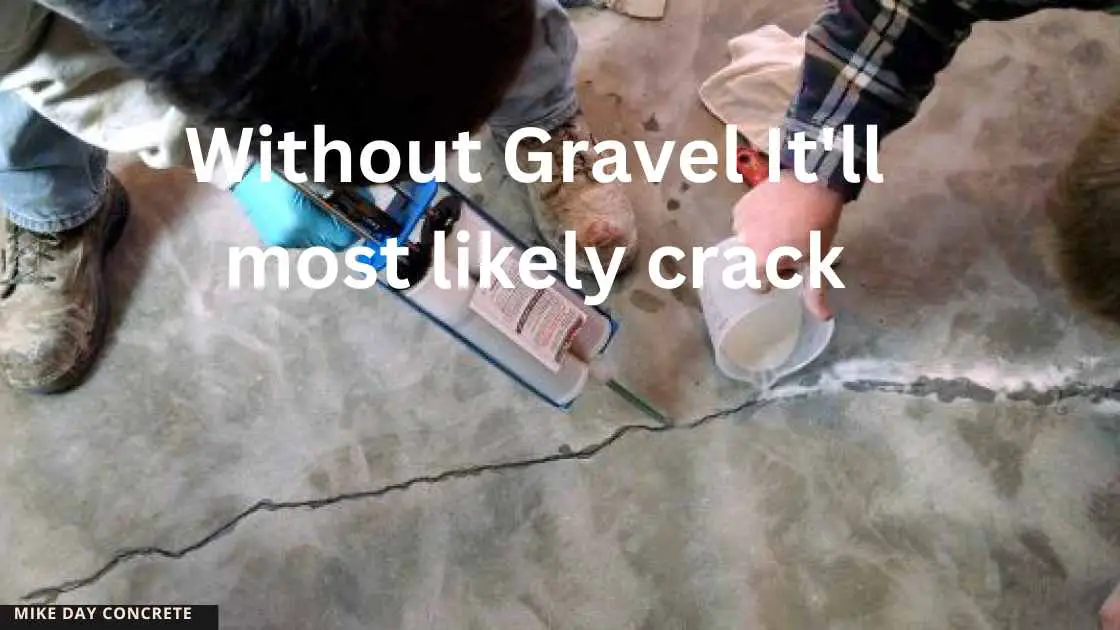
You can pour concrete directly on the ground without gravel, but it is not recommended. Concrete poured on bare soil is more likely to crack, sink, or shift due to poor support, drainage, and moisture problems. Gravel provides a better foundation for your concrete slab and extends its lifespan.
Should I use gravel or sand under a concrete slab?
The choice between using gravel or sand as solid base materials under a concrete slab depends on factors such as the specific requirements of your project, local soil conditions, and the availability of materials. Both gravel and sand have their own benefits and drawbacks.
Let's discuss each option:
- Gravel: Gravel is a popular choice for a sub-base under concrete slabs due to its excellent drainage capabilities, load-bearing capacity, and ease of compaction. The angular crushed stones interlock well, creating a stable foundation that resists shifting over time. Gravel is also less susceptible to frost heave in colder climates, making it a suitable choice in areas prone to freeze-thaw cycles.
pros:
- Good drainage
- Load-bearing capacity
- Stable and compactable
cons:
- Can be more expensive than sand
- Requires proper grading and leveling
2. Sand: Sand can also be used as a sub-base under concrete slabs, but it is typically not as popular as gravel. Sand is easily compacted (if it's moist), but it doesn't provide the same level of drainage as gravel, which could lead to issues in wet environments or areas prone to flooding.
However, sand can be useful in situations where a more flexible sub-base is needed, such as when the concrete slab is subject to ground movement or when the soil is expansive solid clay.
pros:
- Easy to rake, level, and compact (if it's moist)
- Can be more flexible than gravel
cons:
- Poor drainage compared to gravel
- Can be susceptible to washout or erosion
- Doesn't compact well when it's dry
Overall, gravel is generally the preferred choice for a sub-base under a concrete slab and most driveways, due to its superior drainage, load-bearing capacity, and stability.
However, sand may be suitable in specific situations where flexibility is desired or when working with expansive soils. It's essential to consult with local concrete contractors or engineers to determine the best sub-base material for your project based on your site conditions and requirements.
in conclusion:
The importance of gravel under concrete cannot be overstated. Gravel serves as a vital element in the construction process, providing essential drainage, stability, and protection against factors such as frost heave and soil movement.
Choosing the right type of gravel—be it 3/4" crushed gravel, 1" minus, or another suitable option—is key to the performance and longevity of your concrete patio, slab, or driveway. How you install the gravel also matters, with thorough excavation, compaction, and leveling being integral steps.
While sand can be used in certain scenarios, gravel generally provides superior load-bearing capacity and drainage. Whether you're a DIY enthusiast or a homeowner seeking professional services, understanding the role of gravel in concrete work is crucial to achieving a durable, stable, and long-lasting concrete project.
Related Information:
